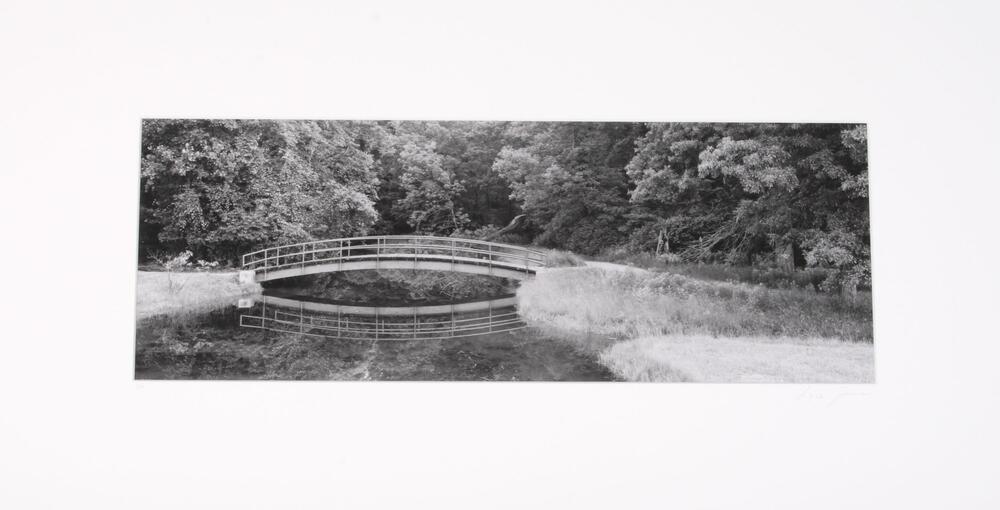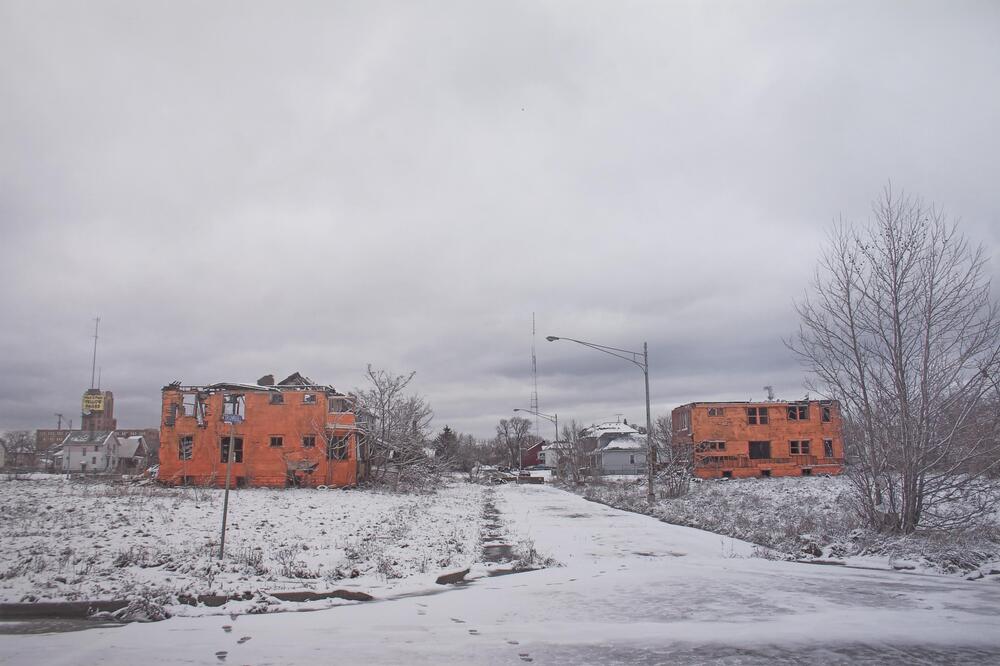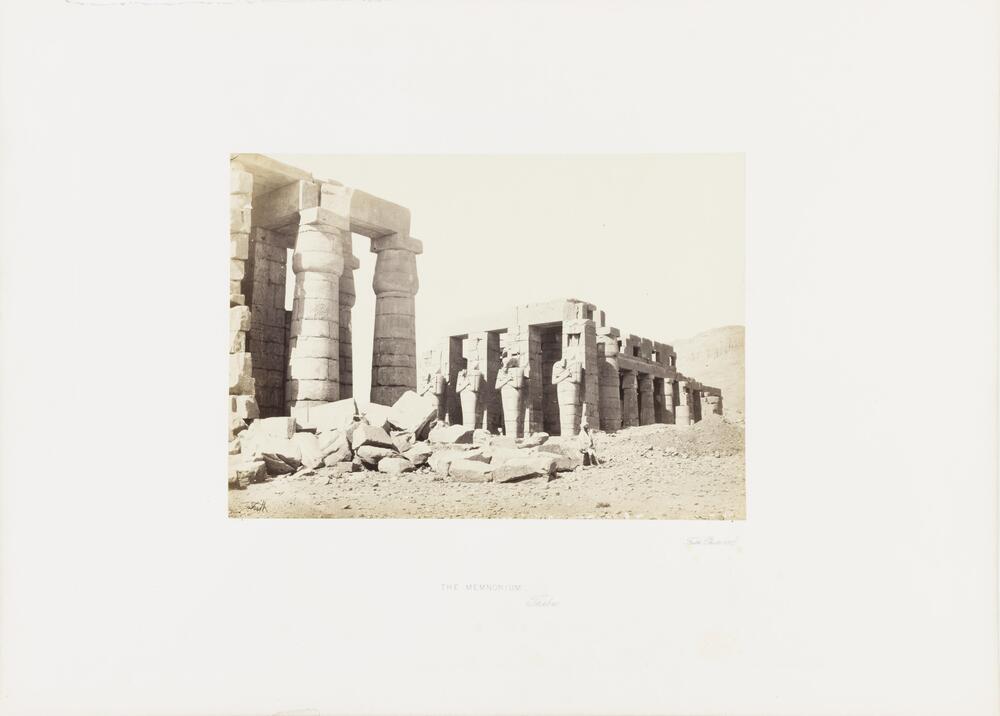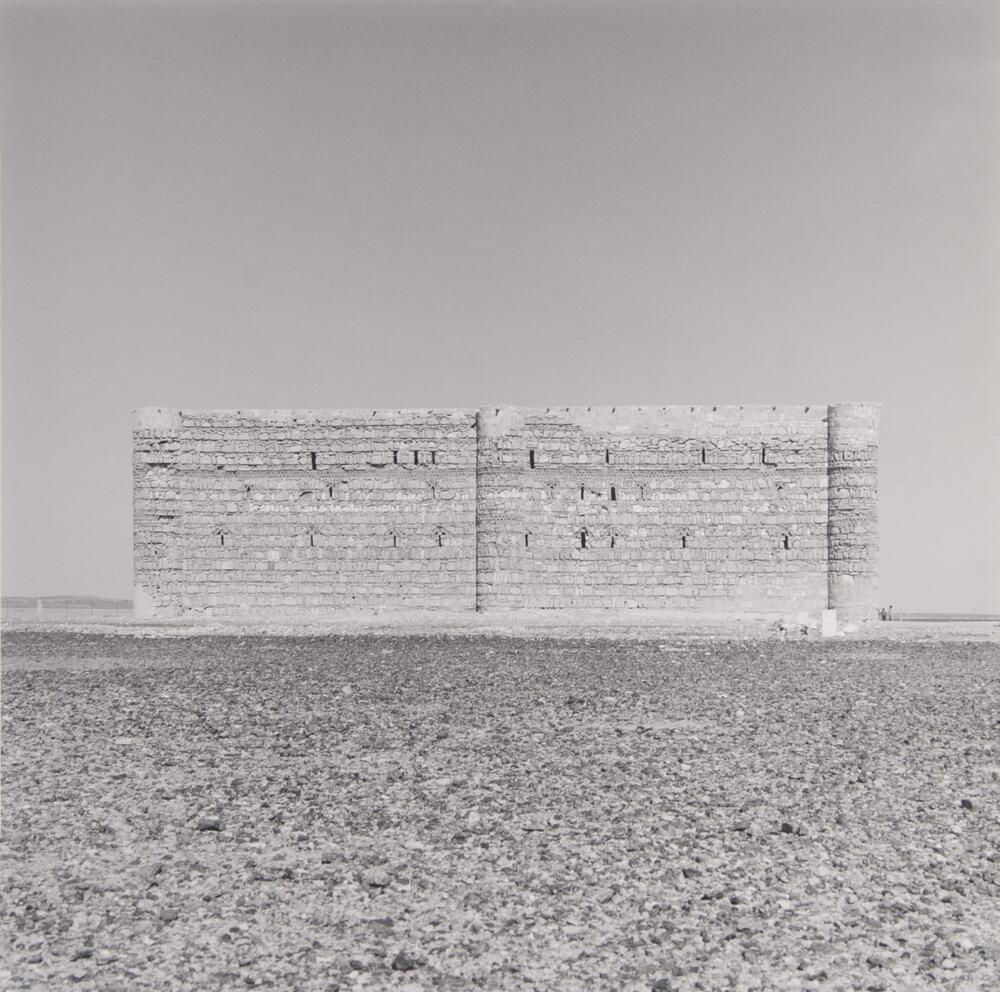Lesson Plan: The New Sublime and Photographic Landscape
“Teaching with Photography” UMMA Teacher Workshop, November 6, 2013
Objectives
Students will discuss issues that pertain to the “beautiful” and the “sublime,” while analyzing different photographs of the American landscape. They will compare and contrast images from one location, as well as compare verbal and visual perspectives on Romantic and contemporary landscape.
National Core Standards
- Interpret intent and meaning in artistic work
- Apply criteria to evaluate artistic work
Grades
9-12
Time Required
One or two class periods
Materials
- Access to photographs of one location, depicting it from various perspectives
Lesson
- Contextualize the lesson by introducing or reviewing the notion of “the beautiful” and “the sublime.” The two terms are often linked to discussions of Romantic philosophy, literature, and visual art. To overly simplify, “beautiful” could be defined as “pleasing to the senses,” and “sublime” as “producing a sense of overwhelming grandeur, loftiness, or awe.” Depending on your students’ grade level and time allotment, delve into the background of Romanticism and the philosophies of Edmund Burke and Immanual Kant as they relate to the Romantic movement and/or literature.
- Provide examples of “the sublime” and “the picturesque” in visual art. Works that are typically referenced include: Frederic Church, Cotopaxi (a dangerous but beautiful volcanic eruption); John Constable, The Hay Wain (bucolic scene capturing the decline of farmland and the rise of Industrialization); John Turner, The Slave Ship (beautiful sunset disguising drowning slaves). In England, paintings were propaganda for the tourism industry. In America, Romantic images of the Westward expansion portrayed an empty land ready for farming and settling, despite the presence of American Indians.
- Discuss how these images capture contradiction and juxtapose beauty with destruction.
- Explain that contemporary photographers also wrestle with how to portray landscape and the complexities of our culture. Study three photographs of Detroit (Belle Isle, Highland Park, and the Rouge Factory). Explore how each photographer has chosen a different approach. Landscape photography can reference typical romantic imagery such as bucolic meadows, vast cloudy skies, and rugged cliffs. Or it can include gleaming metal and glass skyscrapers. Or it can present a site of decay and isolation. This lesson asks students to compare and contrast landscape photography from one city—Detroit—and discuss issues that pertain to American literature and culture.
- Some critics have used the term “New Sublime” to describe the awe and grandeur in depictions of urban decay or destruction. An example of beautiful photographs of a horrific event could be Joel Meyerowitz’s Aftermath, photos of the World Trade Center.
- If time allows, share some of the background information (below) about the artists and objects
- Discuss the following questions, choosing what relates to your subject, location, or context.
a. How do these photographs present Detroit—its industry, history, politics? Object Orange’s motivation for their entire project is to advocate for political and physical action. Regarding the environmental and political issues surrounding the Rouge Plant, Michael Kenna would like to reserve judgment. He states, “I do have strong convictions and political opinions, but I don’t think it’s necessary to imbue my photographic work with them.” Lyle Gomes shows a quiet garden enclave within a city struggling with post-industrial issues. Questions: 1) are the artists’ positions evident when looking at the photographs, without reading their statements? 2) is it possible to be an artist and present a subject, such as urban housing or industry, impassively?
b. Artists (poets, painters, photographers) are fascinated with ruins. Neoclassical painters returned to crumbling Roman columns, Caspar David Friedrich cast tiny figures in the shadows of Gothic walls, and Walker Evans captured a bygone era through moss-covered Southern plantation houses. Ruins represent the “impermanence of human achievement in the face of nature’s eternal power (Tannenbaum),” and challenge viewers to contemplate passing time and human relevance. Currently, there is debate about creating and circulating aesthetically beautiful images of Detroit’s decay. Questions: 1) What is the motivation behind these “ruin porn” images—nostalgia, aesthetic concerns, promoting travel to Detroit? 2) Similar to the argument about pornography of the body, does circulating and promoting these images perpetuate an unhealthy myth about Detroit? 3) Does it promote the image of Detroit as a “broken” city? 4) What is the viewer’s role and/or responsibility?
c. Compare these photographs with landscape photographs of ruins (Francis Frith or Lynn Davis) or with photographs of the World Trade Center aftermath (Joel Meyerowitz). What are similarities in content and form? Can these images fall under the title “The New Sublime”? If so, what types of imagery could this concept / label encompass?
Background on Artists
Object Orange is a group of artists who choose to remain anonymous in order to protect themselves from litigation or police action. They do not care about professional recognition as much as about social justice, for their goal is to raise awareness of the plight of abandoned houses in Detroit. Through their bold paint choices and documentary photographs, they want “everyone to look at not only these [orange] houses, but at all the buildings rooted in decay and corrosion.” Out of this awareness of place, they hope to bring action and change.
Michael Kenna, a former commercial photographer, is known for his quiet black-and-white landscapes and travel photography. Intentionally choosing to omit people from his work, Kenna explains: “I choose to photograph the absence of people, the memory of their presence, the traces of what’s left behind.” Similar to how audience members live in their own imagination while staring at an empty stage, Kenna chooses to photograph the settings of our lives and allow the viewers to create their own stories. Kenna’s personal story began in working-class England, where factories, industry, and mining were part of his daily experience.
He takes long exposures, sometimes for several hours, because he enjoys the process of photography and is determined to achieve clarity and unique effects. These long exposures “collect residual memory;” they accumulate time, something our eyes can’t do. Additionally, because he works primarily at night or at dawn, he captures shifting light and creates dramatic lines and forms. He primarily uses a Hasselblad camera from the 1980s. His still and formal prints are therefore not the product of fancy high-tech equipment but of patient composition and meticulous printing. To him, size matters. The larger the image, the farther away from it the viewer stands. It becomes an object on the wall instead of an intimate image, so he chooses to print smaller photographs in order to encourage viewers to personally engage them.
Background on Photographs
- Object Orange
Object Orange began as a project entitled “Detroit. Demolition. Disneyland,” named for various aspects of the final product. The anonymous artists’ collective followed a similar process for each of their targeted houses in urban Detroit. First, they found abandoned houses situated next to major highways in order to ensure high visibility for suburban commuters. This first step unfortunately was not difficult, as some estimate that there were approximately 7,000 abandoned buildings in Detroit, only 2,000 of which were slated for demolition. Next, the artists coated every surface—boards, windows, doors—Tiggeriffic Orange, part of the Mickey Mouse paint series found at Home Depot. Why orange? Similar to the safety orange sported by hunters and traffic cones, it is impossible to miss. When they finished painting, they photographed the house to document it before, hopefully, it was torn down by the city.
This particular photograph of a house, located on Auburndale Street in Highland Park, is part of a series from 2007. Featured in the Imprint of Place exhibit at the Gallery Project in Ann Arbor, similar landscapes in the series featured cracked roads, overgrown weeds, leaning lampposts. The exhibition catalog includes before and after photographs, highlighting the transformation of an average decrepit brown or brick building into a brightly-colored attraction. Also, painting the house one solid color unifies the broken windows and jagged boards; it flattens the façade and turns glass and wood into a formal study of line and texture. In Auburndale #3, the austere and cold surroundings contrast with the bright house and provide juxtaposition and tension. The heavy gray sky, low horizon line, and leafless winter trees also contribute to a dismal feel. That there are no other buildings or people around is confusing, as it is an urban setting, which we typically associate with activity and commerce.
Object Orange’s project is complex. It includes a physical house, a printed photograph, and an intangible social component. The photograph provides documentation for the entire project, ensuring that it will be remembered and perhaps perpetuated.
- Rouge Plant
Michael Kenna’s photograph of the Rouge Plant in Dearborn, MI, also depicts an essential aspect of Detroit—the auto industry. One of the largest buildings in the world, the Rouge complex was 1.5 miles wide and more than a mile long. It had its own railroad and bus network, and its staff of more than 100,000 people required its own fire department, police force, hospital, and maintenance crew. Henry Ford placed the Rouge complex here for its strategic access to waterways. Located on wetlands, Ford drove hundreds of wood pilings into the swamp to support the enormous buildings. In order to produce a car every 49 seconds, workers smelted more than 1,500 tons of iron and made 500 tons of glass each day. Transforming the environment made a lasting impact, eventually creating a huge brownfield pollution site.
This photograph captures the iconic smokestacks of the Rouge plant. Their billowing smoke produces an ethereal and distant perspective. Historically, rising smoke signified modernity and progress, not pollution. Some critics chastise Kenna’s work for being overly romantic or atmospheric. Their analysis could be applied to this specific photograph because smoke is used as an artistic element highlighting contrast, light, and shadow. Typical of Kenna’s work, black silhouettes and formal minimalism take precedence over political statement or conceptual challenge. Smokestacks become strong verticals, chutes offer dynamic diagonals, and the clear sky provides a solid backdrop for dark foreground shapes. In effect, this massive building becomes a formal study of line, shape, and light.
Although hundreds of thousands of people joined to build, maintain, and work in the Rouge plant, Kenna chose not to represent them directly. He believes the implicit presence of the workers can be felt in the scene. Kenna relates, “I am interested in the relationship, juxtaposition, and interaction between the landscape and the structures that we, humans leave on the landscape. Stories, footprints, evidence, traces, atmosphere, and history” combine in a landscape photograph.
- Belle Isle
Belle Isle is a 982-acre state park on an island in the middle of the Detroit River. It houses a zoo, nature conservatory, an aquarium, public sculptures, a golf course, and other recreational areas. As such, it is a natural oasis in the middle of an urban area. However, historical financial struggles have left some parts in disrepair. Animals such as deer roam on the island.
Gomes, a native of San Francisco, depicts the Belle Isle bridge in an Impressionist style similar to Monet’s garden at Giverny. The indirect, hazy light adds to the effect that this is a lost paradise.
Sources
- Clark, Erin. “Alone with Michael Kenna.” ArtWorks Magazine, June 2007. Accessed 15 September 2013, www.michaelkenna.net/interviews.php
- Smith, Laura. http://csmt.uchicago.edu/glossary2004/beautifulsublime.htm
- Sykes, Clair. “Interview with Michael Kenna.” Photographer’s Forum, Winter 2003, accessed 15 September 2013, www.michaelkenna.net/interviews.php
- Tannenbaum, Barbara. “Afterword,” in Detroit Disassembled (Akron: Damiani, 2010).
- The Henry Ford. www.thehenryford.org/rouge/historyofrouge.aspx
Part of 1 Learning Collection
“Tradition Transformed: Chang Ku-nien Master Painte...
“Creative Literacies: Expanding our View,” UMMA Wor...
UMMA Exhibition, “The Graphic Dimension: Prints and...
“Creative Literacies: Expanding our View,” UMMA Wor...
“Teaching with Photography,” UMMA Workshop for Educ...
“Creative Literacies: Expanding our View,” UMMA Wor...
Lesson adapted from Educator Resources, Victoria & ...
“Benjamin West: General Wolfe and the Art of Empire...
“Creative Literacies: Expanding our View,” UMMA Wor...
“Teaching with Photography” UMMA Teacher Workshop,...
Lesson inspired by Elaine Wilson’s “Charting the Wo...
“Tradition Transformed: Chang Ku-nien Master Painte...
UMMA Teacher Workshop, “Xu Weixin: Monumental Portr...
“Teaching with Photography,” UMMA Workshop for Educ...
“Teaching with Landscape Photography,” UMMA Teacher...
UMMA Teacher Workshop, “Xu Weixin: Monumental Portr...
“Creative Literacies: Expanding our View,” UMMA Wor...
Tags
DetroitLandscape
Lesson
Michael kenna
Object orange
Photography
Romanticism
Rouge plant
Sublime
Rate this Resource
AVG: 0 | Ratings: 0
& Author Notes
Creative Commons by-nc-saLast Updated
March 6, 2017 1:19 a.m.Report
Reporting Policy





